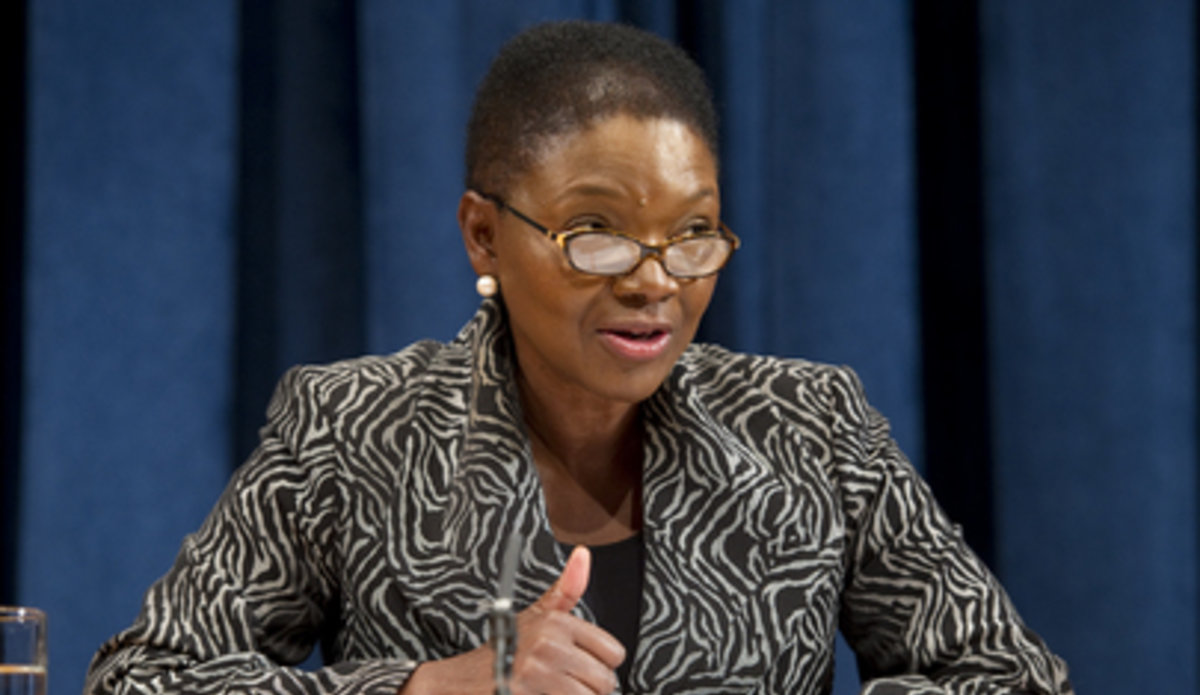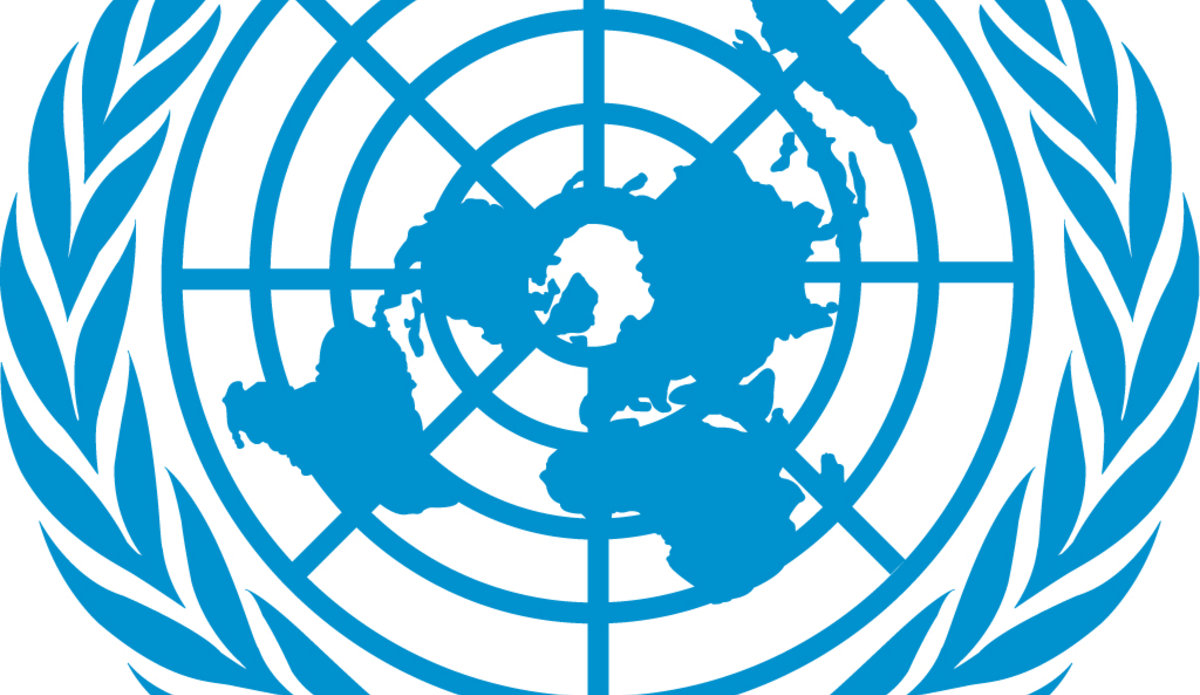Press Conference by Under-Secretary-General for Humanitarian Affairs & Emergency Relief Coordinator
NEW YORK - While the United Nations and its partners would continue to provide immediate humanitarian relief to Afghanistan, aid alone was not enough to deal with the conflict-torn nation’s myriad challenges, the United Nations humanitarian chief said today during a Headquarters news conference.
“It’s absolutely clear that there are major development challenges ahead,” said Valerie Amos, United Nations Under-Secretary-General for Humanitarian Affairs and Emergency Relief Coordinator, upon her return from a three-day visit to assess the country’s humanitarian situation.
She stressed the need, not only for security, but also for increased investment in human development and programmes that supported livelihoods and improvements to primary education, health care, and the rule of law. This year, the Organization was seeking $437 million to aid Afghans affected by conflict and natural disasters, including those that had been displaced or were returning home.
“People need help now, and funding for that 2012 appeal currently stands at only 27 per cent of the total required,” she said, stressing that aiding Afghanistan was a “long, long project”.
More than one third of Afghanistan’s population had experienced displacement, including the 5.6 million people who had returned to the country after living as refugees elsewhere, she said. An estimated 5 million remained in neighbouring countries and another 500,000 were internally displaced by ongoing conflict, recurring natural disasters and underdevelopment in rural areas.
In an informal settlement in Kabul, which she visited during her mission, Ms. Amos said she had found 80 families living in “shocking conditions”, with extremely poor shelter, and little access to water and sanitation, health and education services, and regular income. Collective support for those “poorest of the poor” was vital, as were durable solutions to such underlying problems as the lack of land ownership and economic opportunities.
While in Mazar-i-Sharif, she said she had met with internally displaced persons. In Balkh province, in the country’s north, she had seen homes, schools, roads and agricultural land, which had been destroyed by the erosion of the Amu Darya riverbank. She noted that annual flooding was the norm in Afghanistan and that there had been eight droughts in the past 11 years. In the last six months alone, five villages had disappeared.
“More must be done to help local authorities be better prepared and we must make a greater effort to build the resilience of communities in vulnerable areas,” she said.
Moreover, greater efforts were needed to improve the situation of women and girls, she said. Despite improvements in the last decade, the country’s female population had scant access to medical care and education, and few socio-economic opportunities. They endured high levels of violence and among the world’s highest child and maternal mortality rates.
Asked about the Afghan Government’s scorecard on protecting civilians, especially women and children, and whether outside help was still needed, Ms. Amos said that people she met in Kabul, Mazar-i-Sharif and Balkh province had complained overall that their needs were not being met by either the international community or local and national authorities. “We all came in for criticism in one way or another,” she said. Indeed, the international community’s commitment to Afghanistan to meet immediate humanitarian needs and assist with development must continue for the long-term.
As to whether the United Nations would be in a position to deliver aid after the International Security Assistance Force (ISAF) left Afghanistan in 2014, she said given the scale of development challenges — among them, high levels of illiteracy and unemployment — the United Nations could not go it alone. The Afghan Government and donor partners had a significant role in aid delivery. Also, there was almost a direct correlation between the amount of incoming aid and the country’s gross domestic product (GDP).
Asked if opium growers and smugglers were providing relief supplies and whether they would fill the aid void after the international troops left in 2014, she said she had not seen evidence to that effect in the areas she had visited.
Correspondents also asked several questions on the crisis in Syria. As to the United Nations prospects to reach agreement with the Syrian Government on an aid distribution plan that would meet the Organization’s criteria for neutrality, she said talks were under way about delivery methods. At the end of March, after participating in the Syrian Government-led assessment, the Organization had established that 1 million Syrians were in need of assistance. But that figure likely had risen since then.
Martin Nesirky, Spokesperson for the Secretary-General, who accompanied Ms. Amos at the press conference, added that the Joint Special Envoy for the United Nations and the Arab League on the Syrian Crisis had strongly urged the Syrian Government to accept the conditions to scale up humanitarian aid without further delay and underscored the need for a speedy agreement consistent with the Government’s commitment to allow unimpeded access and relief to Syrians in need.
As to the increase in Syrian refugees in neighbouring countries, Ms. Amos said the number of refugees overall had risen significantly. But the number of registered refugees had not increased proportionally, owing to the fact that Syrians could move freely to Lebanon and Jordan without a visa. The Office of the United Nations High Commissioner for Refugees (UNHCR) had devised a regional plan to respond to the refugee situation in Syria, and the Organization was strengthening the capacity of its country teams in Jordan and Lebanon. Moreover, it was working with the Turkish Government, which had spent some $150 million on camps to house Syrians fleeing the conflict.
Asked about the main obstacles to negotiating humanitarian access with the Syrian Government and whether that plan was even realistic, Ms. Amos conceded that negotiations over who would deliver aid had been very slow. Syrian authorities were keen on making that the responsibility of the Syrian Arab Red Crescent. The Organization had been able to slowly scale up its capacity and that of international non-governmental organization partners.
Concerning reports that the Syrian Government was attacking Syrians and other people attempting to smuggle in food and medicine, Ms. Amos said she had not been made aware of attacks on specific individuals. But some smaller community-based groups had expressed concern that if they began to put together lists of names of people in need of aid, those people might be targeted.
To a question about whether the humanitarian situation in Syria had improved since the deployment last month of the United Nations observer mission, she said that was hard to assess. Significant needs had not yet been met. The World Food Programme (WFP), through the Syrian Arab Red Crescent, had delivered food to 250,000 people this month, up from 100,000 last month. But that was small in relation to the needs identified in the Organization’s response plan for Syria. Although the ceasefire between the Syrian Government and the opposition had not held, the United Nations monitors’ presence had stemmed violence somewhat.
Turning to Sudan, a reporter asked about the Organization’s progress in gaining humanitarian access to Southern Kordofan and Blue Nile states along the southern border. Ms. Amos said the United Nations had signed an access agreement with the Sudan People's Liberation Movement-North political party and it was still working to persuade the Sudanese Government to sign on as well. The number of refugees that had left Southern Kordofan and Blue Nile for South Sudan had reached 121,000; another 30,000 had crossed into Ethiopia. Increasing levels of malnutrition among them were “extremely worrying”.
Asked if there was a United Nations humanitarian presence in northern Mali since its recent takeover by rebel groups, she said there was not and that the Organization, through a recently appointed regional humanitarian coordinator, now was trying to negotiate access. She estimated that 725,000 people in northern Mali were in urgent need of humanitarian relief.
Compiled by UN DPI
For information media • not an official record
 UN
UN










